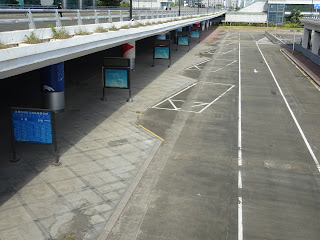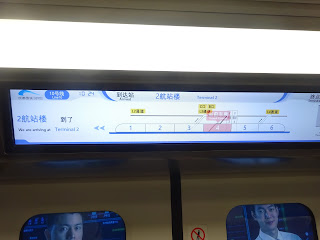Shenzhen is a Chinese city of somewhere between 13 and 20 million people, which immediately borders Hong Kong and which has been the Chinese government's 'demonstration project' for free market principles for the best part of the last four decades. The proximity of the city to Hong is demonstrated by the fact that the HK Mass Transit Railway (MTR) has two lines which interchange on to Shenzhen's metro, with a border crossing between them. The rate of growth of the city of Shenzhen (the population has pretty much doubled this century) has necessitated the construction of a lot of new infrastructure, not least the metro system and a new airport.
 |
| The old airport has a relatively modern form. |
 |
| Departures level could pass for one of many modern airports. Yet it's abandoned! |
 |
| All entrances are boarded up with fencing. A lot of the airport specific internal fittings such as check-in desks has been removed and presumably repurposed at anther airport somewhere in China. |
 |
| The entrances to the airport are barricaded with concrete barriers. |
 |
| This area between the two terminals would once have been access for servicing and staff. |
 |
| Old fittings and signage now dumped. |
 |
| This would have been a bustling bus station until about five years ago. |
 |
| Doors to the terminal at arrivals level are also blocked. |
 |
| The number of airlines now operating in China would have rendered this sign far too small if it were still in use! |
 |
| Dry and dilapidated water features on the arrivals level. |
 |
| Entrance to the car park |
 |
| Bleacher seating around the short stay car park suggests at some point it has been used for some kind of sporting event. |
 |
| Escalators are still in situe on the access to the metro station. |
 |
| However this entrance to Shenzhen Airport East metro station is definitely closed. The metro station itself still functions as the terminus of Line 1 and has a lot of interchange with local buses. |






































